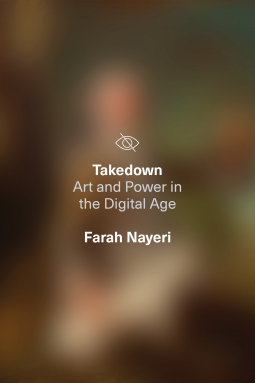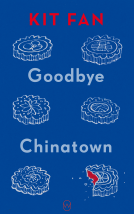
Takedown
Art and Power in the Digital Age
by Farah Nayeri
This title was previously available on NetGalley and is now archived.
Send NetGalley books directly to your Kindle or Kindle app
1
To read on a Kindle or Kindle app, please add kindle@netgalley.com as an approved email address to receive files in your Amazon account. Click here for step-by-step instructions.
2
Also find your Kindle email address within your Amazon account, and enter it here.
Pub Date Jan 25 2022 | Archive Date Jan 11 2022
Astra Publishing House | Astra House
Talking about this book? Use #Takedown #NetGalley. More hashtag tips!
Description
For centuries, art censorship has been a top-down phenomenon--kings, popes, and one-party states decided what was considered obscene, blasphemous, or politically deviant in art.
Today, censorship can also happen from the bottom-up, thanks to calls to action from organizers and social media campaigns. Artists and artworks are routinely taken to task for their insensitivity. In this new world order, artists, critics, philanthropists, galleries and museums alike are recalibrating their efforts to increase the visibility of marginalized voices and respond to the people’s demands for better ethics in art.
But what should we, the people, do with this newfound power?
With exclusive interviews with Nan Goldin, Sam Durant, Faith Ringgold, and others, Nayeri tackles wide-ranging issues including sex, religion, gender, ethics, animal rights, and race.
By asking and answering questions such as: Who gets to make art and who owns it? How do we correct the inequities of the past? What does authenticity, exploitation, and appropriation mean in art?, Takedown provides the necessary tools to navigate the art world.
Advance Praise
"Farah Nayeri’s Takedown, about art and power in the digital age, is a timely book that is uniquely brilliant. The author, backed up by facts, maps out the crazy madness of our current art world which to a great degree reflects today’s extreme capitalism. In a clear and succinct manner, she unravels the giant game of power, money, and competition ingrained in cultural institutions, where issues of individual freedom, gender and religion are at play. The book is easy to read, interesting, and observant. In its conclusion, the author quotes Alice Procter’s answer to the question of how soon a changing of the guard in the art world will happen, 'I think some people have to die' – a fittingly controversial language." — Ai Weiwei
Marketing Plan
National media campaign including print, radio, and online coverage
Pitch for feature stories and author profiles
Multi-month social media prepublication campaign on Astra House's Twitter, Facebook, and Instagram
Author events in collaboration with key institutions, publications, and big names in the art world
Highlight in Astra House newsletters and on website
Digital marketing/publicity campaign including features and reviews
Bookseller outreach
ARC giveaways on Goodreads and NetGalley
Library Marketing
Academic outreach: art history and women's studies departments
Special markets outreach: art museum gift/bookshops
Targeted #Bookstagrammer outreach
Targeted outreach to arts and culture, feminist, and left-leaning political publications
Available Editions
| EDITION | Other Format |
| ISBN | 9781662600555 |
| PRICE | $28.00 (USD) |
| PAGES | 304 |
Average rating from 6 members
Featured Reviews
I just finished a course on inclusiveness by ICOM (international museum association), and doing a course on women in art from 1900-now. Both already touched on some elements in this book, but Farah really got into it.
It was fascinating to hear more about the different types of censorship in the past, and how social media has given a voice to the masses. I think it's very difficult on how to deal with art made by problematic people, can you still love it?
I thought one of the examples on the Gauguin exhibit was very interesting, how you can show art by a problematic man, but also inform the viewer on him as a person and what the issues.
I think more context should be given in a lot of museums. I think this book is interesting for both people who love art, and don't know that much about it.
 Reviewer 387294
Reviewer 387294
This is a really approachable cultural history of power in the art world—who was able to create art, fund art, and view art. Nayeri's tone is inquisitive, conversational, and warm. I think this was essential to my enjoyment, since many art tomes seem intimidating and use complex verbiage that even as someone who studied art and art history, I easily get sick of. This book always kept me engaged and intrigued.
Her insider knowledge and perspective was great, and allowed her to speak to many of the artists and gallery owners whose stories were featured in this book. These primary sources really enriched Nayeri's narrative and offered a space for artists to reflect on events that had sometimes occurred many years ago. I had learned about some of these controversies before, but it was great to read a new perspective (sometimes from the artist themselves!).
If you're at all interested in the art world, definitely check this one out!
The art world is full of drama, but Nayeri is able to distill this drama into a more sociological investigation of the democratization of art. I love how the author wove in pressing issues of the day, like race, class, ethics around animal rights, and interviewed preeminent artists for this book. The questions ultimately revolve around what kind of responsibility we have artists and consumers as access to the creation of art becomes widespread.
Readers who liked this book also liked:
Denny S. Bryce
General Fiction (Adult), Historical Fiction, Multicultural Interest
Kotteri
Comics, Graphic Novels, Manga, General Fiction (Adult), Teens & YA







